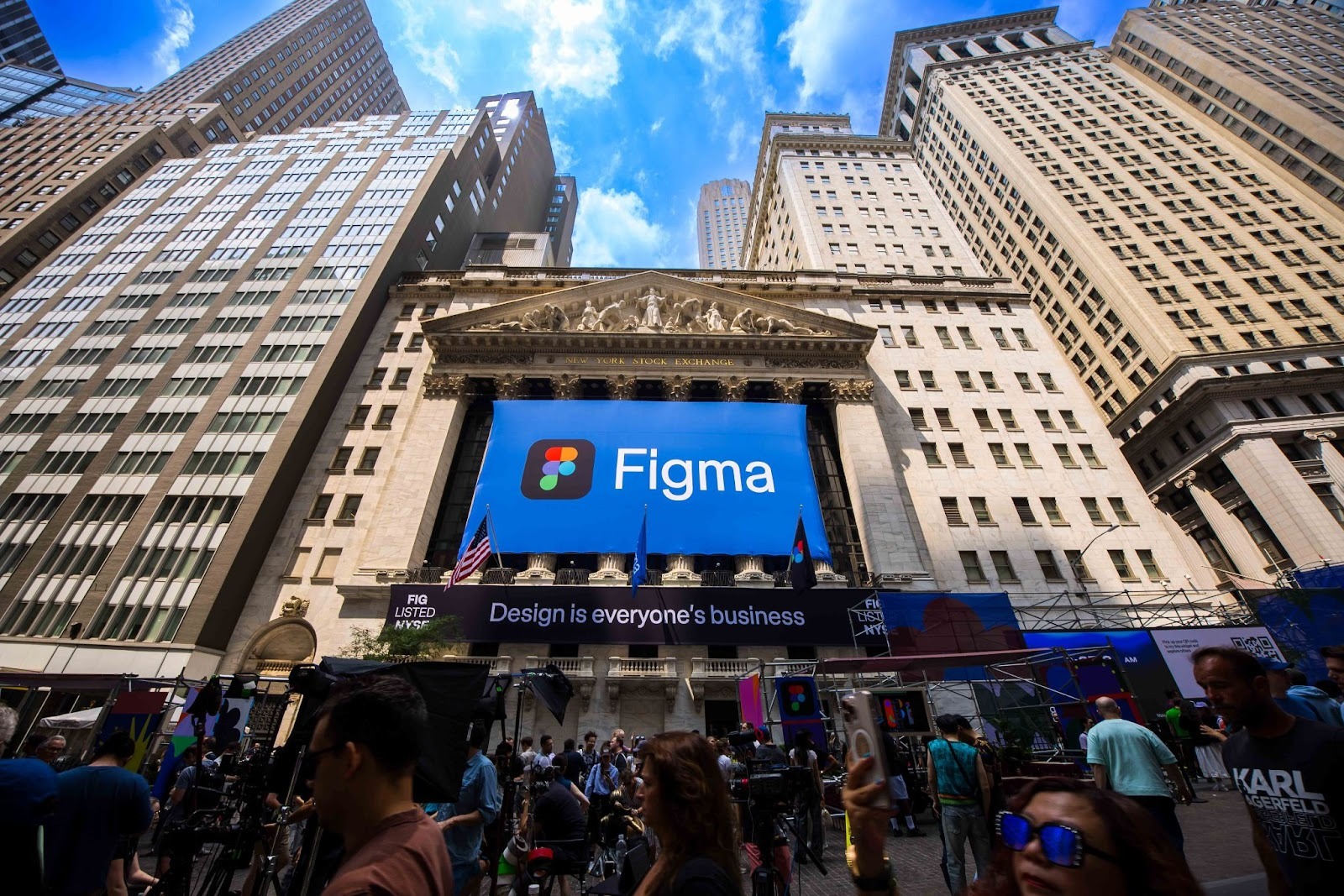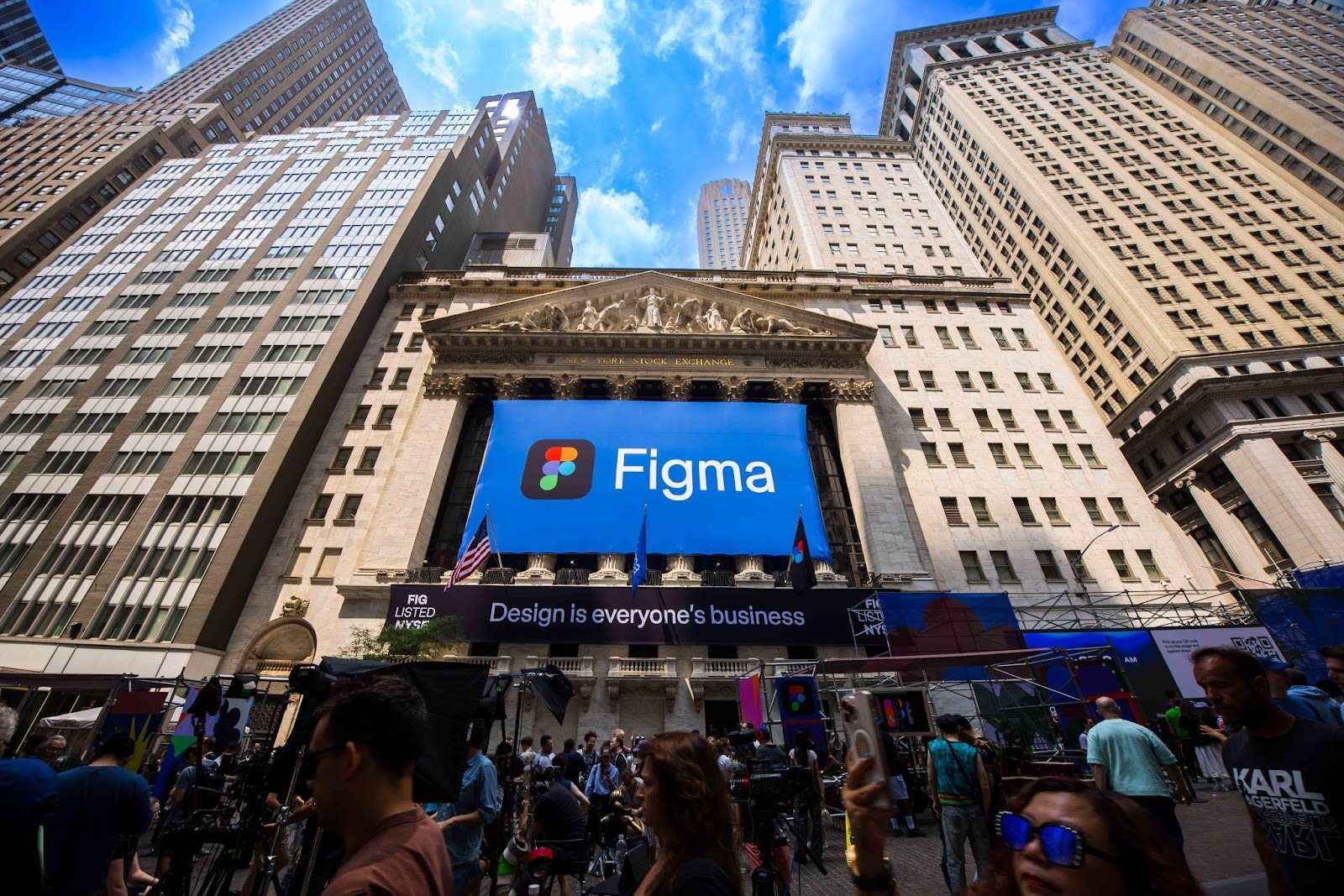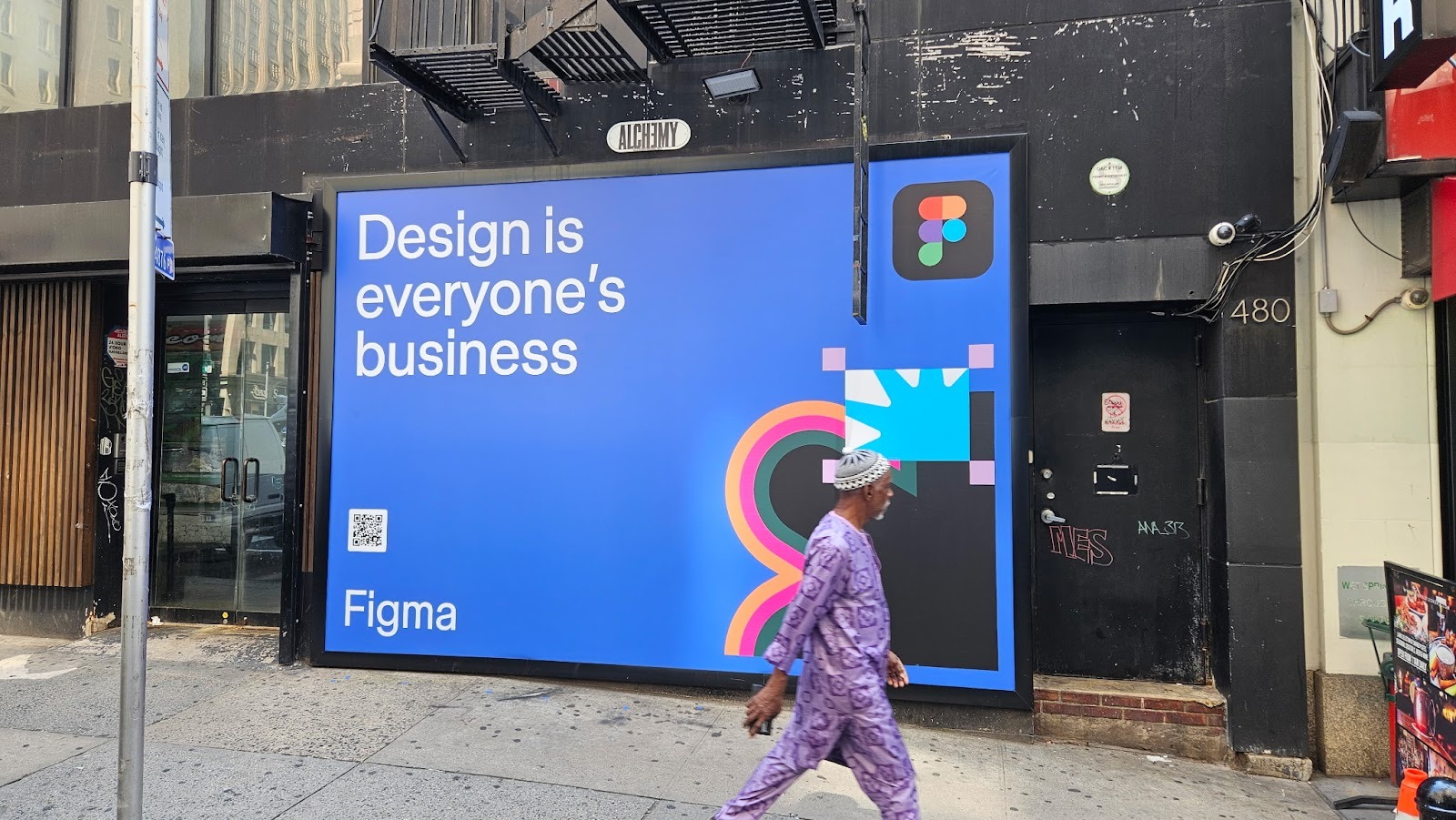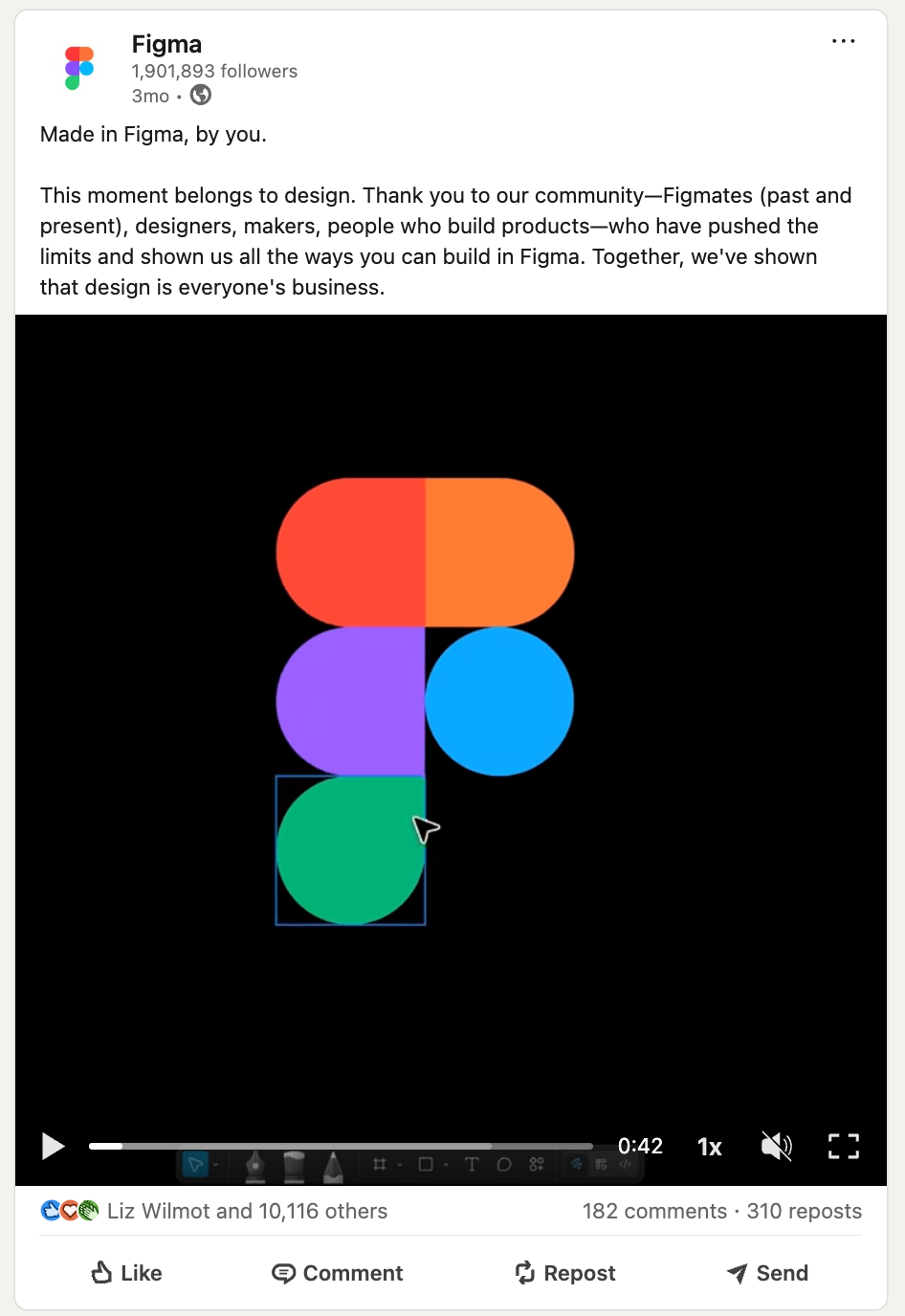
Sitting as a copywriter on Figma's Brand Studio team, we're surrounded by some of the most talented designers and animators in the industry. Crits go deep into the visual details—is that squiggle too fuzzy? Is the orange a friendly shade? What is the work communicating to our audience?
We’re a design-first company, and that’s how we like it. But we’re not designers. We’re copywriters.
Our role as writers on the Brand Studio team at Figma isn’t always obvious in the finished work, but it plays a major part in shaping the stories we tell. Storytelling is the caffeine jolting every creative project, energizing concepts and connecting all the disparate pieces.
So how exactly do three copywriters keep up with 20 visual designers? How do we make sure we’re all telling the same brand story? Let’s talk about it.
Writing as a design tool
Figma copywriters enter the creative process at the very beginning—right alongside our design partners. We do more than slap a witty headline on a billboard; we’re valued as partners to help find the creative center of the work.
In those early brainstorming stages with our design partners, we’re always advocating for the most opinionated concept, the universal theme, and plain but powerful language.
A good example of this is our most recent brand campaign for our AI-prompt-to-app tool, Figma Make, which culminated in billboards and in-person activations in multiple cities around the world. Our job started with asking the big questions. What story should we tell about this product? What concept could work in San Francisco, Tokyo, and beyond?
Alongside the designers, we collectively decided that the campaign needed to be grounded in human-first messaging and imagery. One, because that’s a core part of Figma as a company, and two, because most AI billboards are written in jargon and lack emotion. Our rallying cry was “Push it,” a call for makers to dig deeper into their creative practice and follow ideas wherever they might lead. We decided that the point wasn’t to announce that we have a new AI tool. It was to let makers know that we have a tool that helps them take their craft further—but creativity starts with them.
Only after we figured out the why were we ready to tackle the how. Our tagline, “Prompt it, then push it,” inspired makers to explore an idea maze, designing dozens of glyphs that they laid over close-up shots of human hands on keyboards.
The end result was a human-centered campaign co-created by our team’s writers and designers. We were able to make something better together—not because we started with writing or designing, but because we started with a story.

Why we work in Figma Design
To no one’s surprise, we use Figma at Figma. When most of us started our careers, copy and design lived in separate worlds. Writers shared drafts with designers, who then imported that copy into their latest file. Every edit required another handoff. The rhythm was clunky. The process was irritating. Not to mention, writers couldn’t see if their headlines were too long or a line break looked off.
Now, we all work together in the same place. Figma copywriters tinker in our own dedicated Figma page inside the design file, writing and editing in situ. We mock up prototypes, design FigJam templates, and offer design feedback. In turn, we welcome ideas from our partners. Designers have given us headlines, marketers have written taglines, and our animators have edited scripts.
Because there’s no curtain separating our disciplines, there’s a flow to our collaboration. The creative process moves faster, ideas evolve quicker, and we’re all able to spend more time on what matters most: concepting, making, and pushing our craft.
Conversations as a first draft
Good copywriters are good listeners. We’re often the translators between teams with a wide range of goals—from straightforward SEO copy to funny social video, we find the common ground that connects us all.
Through our conversations with partners and customers, we pick up phrases, terms, and insights that inform the final story. We watch product demos, and we listen to users confused by them. We ask the questions everyone assumes are already answered—because those often house the most ambiguity.
On paper, we’re writers. In practice, we’re also stand-ins for our audience. We’re especially attuned to buzzwords, jargon, and complicated product explanations. If we don’t get it, neither will a general audience.
Seeking clarity helps us understand not only what we want to communicate, but why it matters to our audience. When everyone starts from the same narrative—whether they’re a designer, product manager, or copywriter—you can see the connection between designs, social posts, press releases, and other assets, no matter who made them.



Telling the write story
On our Brand Studio team at Figma, we may have different roles, but we share the same responsibility—to tell meaningful stories. We’ve found a groove where writing is part of the design process itself, helping shape ideas from start to finish. Because we collaborate in the same space with the same tools, the words we write and visuals we create tell the same story—one we’ve built together.
Feeling a little lost in Figma?
We’ve got you. Stay tuned for a dedicated article with tips for copywriting in Figma Design.
Kaley Aposporos, Andrea Helmbolt, and Julia Oller are the trio behind Figma’s Brand Strategy and Copy team. Together, they shape how Figma sounds, feels, and shows up in the world. Before joining Figma, they each honed their craft at companies like Zendesk, GoFundMe, and Intercom—bringing years of brand storytelling experience to their work.
Sitting as a copywriter on Figma's Brand Studio team, we're surrounded by some of the most talented designers and animators in the industry. Crits go deep into the visual details—is that squiggle too fuzzy? Is the orange a friendly shade? What is the work communicating to our audience?
We’re a design-first company, and that’s how we like it. But we’re not designers. We’re copywriters.
Our role as writers on the Brand Studio team at Figma isn’t always obvious in the finished work, but it plays a major part in shaping the stories we tell. Storytelling is the caffeine jolting every creative project, energizing concepts and connecting all the disparate pieces.
So how exactly do three copywriters keep up with 20 visual designers? How do we make sure we’re all telling the same brand story? Let’s talk about it.
Writing as a design tool
Figma copywriters enter the creative process at the very beginning—right alongside our design partners. We do more than slap a witty headline on a billboard; we’re valued as partners to help find the creative center of the work.
In those early brainstorming stages with our design partners, we’re always advocating for the most opinionated concept, the universal theme, and plain but powerful language.
A good example of this is our most recent brand campaign for our AI-prompt-to-app tool, Figma Make, which culminated in billboards and in-person activations in multiple cities around the world. Our job started with asking the big questions. What story should we tell about this product? What concept could work in San Francisco, Tokyo, and beyond?
Alongside the designers, we collectively decided that the campaign needed to be grounded in human-first messaging and imagery. One, because that’s a core part of Figma as a company, and two, because most AI billboards are written in jargon and lack emotion. Our rallying cry was “Push it,” a call for makers to dig deeper into their creative practice and follow ideas wherever they might lead. We decided that the point wasn’t to announce that we have a new AI tool. It was to let makers know that we have a tool that helps them take their craft further—but creativity starts with them.
Only after we figured out the why were we ready to tackle the how. Our tagline, “Prompt it, then push it,” inspired makers to explore an idea maze, designing dozens of glyphs that they laid over close-up shots of human hands on keyboards.
The end result was a human-centered campaign co-created by our team’s writers and designers. We were able to make something better together—not because we started with writing or designing, but because we started with a story.

Why we work in Figma Design
To no one’s surprise, we use Figma at Figma. When most of us started our careers, copy and design lived in separate worlds. Writers shared drafts with designers, who then imported that copy into their latest file. Every edit required another handoff. The rhythm was clunky. The process was irritating. Not to mention, writers couldn’t see if their headlines were too long or a line break looked off.
Now, we all work together in the same place. Figma copywriters tinker in our own dedicated Figma page inside the design file, writing and editing in situ. We mock up prototypes, design FigJam templates, and offer design feedback. In turn, we welcome ideas from our partners. Designers have given us headlines, marketers have written taglines, and our animators have edited scripts.
Because there’s no curtain separating our disciplines, there’s a flow to our collaboration. The creative process moves faster, ideas evolve quicker, and we’re all able to spend more time on what matters most: concepting, making, and pushing our craft.
Conversations as a first draft
Good copywriters are good listeners. We’re often the translators between teams with a wide range of goals—from straightforward SEO copy to funny social video, we find the common ground that connects us all.
Through our conversations with partners and customers, we pick up phrases, terms, and insights that inform the final story. We watch product demos, and we listen to users confused by them. We ask the questions everyone assumes are already answered—because those often house the most ambiguity.
On paper, we’re writers. In practice, we’re also stand-ins for our audience. We’re especially attuned to buzzwords, jargon, and complicated product explanations. If we don’t get it, neither will a general audience.
Seeking clarity helps us understand not only what we want to communicate, but why it matters to our audience. When everyone starts from the same narrative—whether they’re a designer, product manager, or copywriter—you can see the connection between designs, social posts, press releases, and other assets, no matter who made them.



Telling the write story
On our Brand Studio team at Figma, we may have different roles, but we share the same responsibility—to tell meaningful stories. We’ve found a groove where writing is part of the design process itself, helping shape ideas from start to finish. Because we collaborate in the same space with the same tools, the words we write and visuals we create tell the same story—one we’ve built together.
Feeling a little lost in Figma?
We’ve got you. Stay tuned for a dedicated article with tips for copywriting in Figma Design.
Kaley Aposporos, Andrea Helmbolt, and Julia Oller are the trio behind Figma’s Brand Strategy and Copy team. Together, they shape how Figma sounds, feels, and shows up in the world. Before joining Figma, they each honed their craft at companies like Zendesk, GoFundMe, and Intercom—bringing years of brand storytelling experience to their work.

.jpeg)


.avif)
